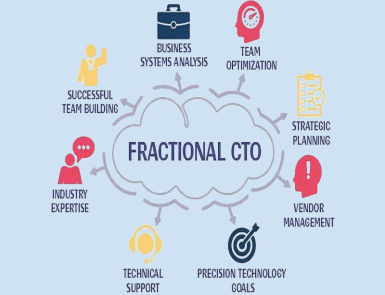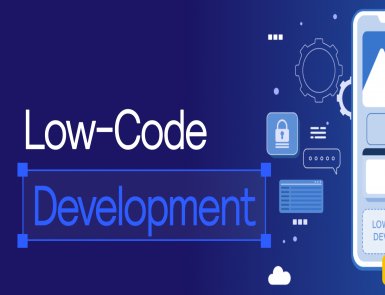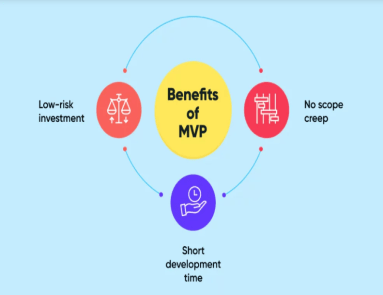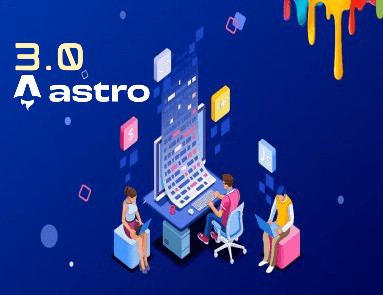React 19: What’s New in it?

React, the popular JavaScript library has been consistently evolving since its first release in 2013. React 19 is a newly released version of this library. It promises to offer numerous benefits to web developers. Let’s learn about the changes and enhancements users can notice in React 19. Features & Improvements of React19 React Compiler While it is in the experimental stage, React 19 has introduced a React Compiler. It converts React code into JavaScript to improve performance. The compiler also manages the component rendering for the UI state. Users do not need to change the state and UI as the compiler does it. Besides this, the React Compiler abolishes the need to employ useMemo and useCallback method calls. The compiler caches and optimizes components as per the requirements. Actions React 19 introduces Actions. This new feature is designed to manage data mutations. Developers do not need manual codes to handle pending states and optimistic updates & errors. The key features of this update include: Automatic Pending State Actions manage the pending state automatically during the data fetching. Easy Error Handling It features a built-in error-handling system. It automatically reverts optimistic updates when a request fails. Optimistic Updates Users can get immediate feedback while data is being submitted, thanks to useOptimistic. Form Handling With this update, Form elements can employ formAction and action props to take advantage of Actions functionality. It makes form submission straightforward. React Server Components (RSCs) RSCs in React 19 allow developers to render UI components on the server. It pre-renders components on the server to improve initial page load time. Therefore, users consume content faster. Additionally, the codes of RSCs do not need to be added into a bundle as it renders on the server. Consequently, it supports small downloads for users. New Hook: useActionState useActionState is a new hook introduced in React 19. It makes the handling of data mutations straightforward. It tracks the pending state and eliminates the need for manual handling. It manages the pending state and returns the final result of the action. New Hook: useFormStatus useFormStatus is another new hook in React 19. It helps child components to access the status of the parent form. The hook abolishes the need to pass the form state through multiple props. useFormStatus makes component hierarchies simple and clean. It also minimizes the boilerplate code for components interacting with the form state. New Hook: useOptimistic React 19’s useOptimistic hook manages optimistic UI updates during asynchronous data mutations. The hook lets developers define an optimistic state value, which gets rendered immediately. Consequently, users get feedback on the expected outcome immediately. It also automates state management and enhances the overall user experience. Concurrent Rendering React 19 supports concurrent rendering. It enables React to make multiple versions of the UI simultaneously. It improves the responsiveness of applications by handling the high-priority updates first. Nevertheless, it does not block lower-priority updates. New JSX Transform The latest JSX transformation makes the compilation process easy. It minimizes the size of the React library required to be included in the project. Since the New JSX transform reduces the overall bundle size, you experience faster load times. Furthermore, developers do not need to import React to employ JSX. Improved SSR (Server-Side Rendering) React 19 has improved server-side rendering. Its improved algorithms minimize the time it takes to render components on the server. Besides, it also improves search engine indexing. New Transition API React 19 introduces the new transition API to define UI transitions. It makes managing transitions and animations in complex apps simple. React 19 maintains visual consistency and improves the overall user experience. Improvement in React Developer Tools React 19 DevTools can identify and fix bugs easily. It offers better debugging and performance profiling. Since developers get detailed performance profiling, they can optimize their application’s performance better. Performance Improvement If we compare React 19 to React 18 based on performance, it has improved several times. It shows about a 20% improvement in rendering speed for complex UI. Additionally, React 19 minimizes memory consumption by 15% in particular applications. You can also notice that applications built using React 19 load 10% faster on average. Improved Development Workflow React 19 brings numerous features that streamline the development process. Developers can improve their productivity several times. Some crucial features include: React 19 lets developers manage multiple updates altogether. It naturally minimizes the complexity of handling high and low-priority updates. This new version of React helps developers manage asynchronous data fetching. Thus they avoid unnecessary re-renders and manage loading states quickly. React 19 supports automatic batching of updates Web developers can define UI transitions, thanks to the new Transition API. Developers get improvements in additional tools and libraries, such as React Query, Recoil, Next.js, etc. Conclusion React 19 has brought numerous improvements to the library. High rendering speed, streamlined development, and minimized bundle size have taken the platform to the next level. If you have not upgraded to React 19 yet, do it now. You will surely relish smooth interactions, faster loading times, and easy handling of asynchronous operations.
Fractional CTO: Exploring Their Roles in Modern Businesses

Today, you cannot imagine a business to succeed without the help of technology. Artificial intelligence (AI), Machine learning, and the Internet of Things (IoT) are transforming almost every industry. Businesses need a chief technology officer (CTO) to manage these cutting-edge technologies. These professionals develop, implement, and manage technology systems for organizations. Unfortunately, small and medium-sized companies can’t afford the hefty expenses of CTOs. This is the scenario where a fractional CTO comes into play. They are part-time executives who offer high-level technology leadership similar to a CTO. Let us get to know more about Fraction CTO. Fractional CTO Definition Like the CTO, a fractional chief technology officer is a senior executive who offers technological expertise to businesses. They do this job part-time or on a contractual basis. SMBs and startups that need proficient technological oversight without hiring a full-time officer can go for a fractional CTO. A fractional CTO creates a technology roadmap and manages IT projects. Generally, the job involves the supervision of software developments and the implementation of cybersecurity measures. Additionally, a fractional CTO ensures that the IT policies of the company perfectly align with the business goals. Advantages of Hiring a Fractional CTO Affordable Expertise One of the primary advantages of hiring a fractional CTO is that you get the expertise and experience of a CTO without paying a full-time salary. As a fractional CTO works part-time, businesses pay for the relevant hours. You Get Technical Leadership A fractional CTO mentors your in-house technical team and provides them with the required guidance for developing effective business methodologies. Since they have years of experience, fractional CTOs deliver appropriate strategic insights. They supervise the architecture and development of technology solutions. Furthermore, they allocate resources evenly to balance the workload. Besides this, they ensure that all the technology systems are working appropriately. Flexibility Hiring a fractional CTO gives you adequate flexibility. You can engage with the CTO as required. Depending on your budget and requirements, you can determine the working hours for your Fractional CTO officer. Risk Mitigation Fractional CTOs evaluate the existing technological infrastructure of your organization and look for potential vulnerabilities. They ensure that technology adapts to changing market conditions. Additionally, they implement security frameworks to protect data from breaches and other cyber threats. A fractional CTO officer is also responsible for conducting security audits and complying with required industry regulations and standards. Quick Digital Transformation With fractional CTO, you can fast-track your digital transformation. Their expertise and experience can shorten the learning process of your team. Furthermore, they can speed up the development and implementation of technology strategies. Fresh Perspective When you bring in an external professional to your team, you get a unique perspective on your strategies. They can provide you with unbiased insights into your industry. Furthermore, they can guide you about improvements your internal team can focus on. Who Should Consider Hiring a Fractional CTO? Startups and SMEs (Small to Medium-sized companies) can benefit from fractional CTOs. Since technology is constantly evolving, small companies have to face many technological challenges. The primary obstacles hindering the success of SMEs are incompetent teams and inadequate resources. Fortunately, fractional CTOs can help them overcome these concerns. Let us explore scenarios in which fractional CTOs can be beneficial. Startups and SMBs looking for strategic technological guidance can benefit from a fractional CTO. Companies with limited resources can hire a part-time CTO and relish top-tier technical leadership. Companies undergoing transitional phases like acquisitions and merges can significantly gain from a fractional CTO. These experienced professionals can take care of their technical aspects during this period. Moreover, firms that observe rapid growth can seek the assistance of an interim chief technical officer. Hiring a fractional CTO can also help the company run a project that needs guidance and insights from a seasoned IT professional. Whether you need to set up an IT system or upgrade the existing one, on-demand chief technology can give you full support. A fractional CTO can also help non-IT companies leverage the technology to enhance the efficiency of their operations. Businesses operating across different geographical locations can hire on-demand chief technology officers to get technological leadership. Should I Hire a Fractional CTO? Regardless of the business you are into, the use of technology can take it to the next level. In order to do that, you must get access to expert technological leadership. Hiring a fractional CTO is an inexpensive way to get skilled technological direction. If you are confused about whether or not you should hire a fractional CTO, ask yourself the following questions. Does our company require expert technological guidance? Do we want flexibility in our approach to engage with technological leadership? Does our business need strategic direction and expert oversight? If the answer to any of the above questions is yes, consider hiring a fractional CTO. Don’t you have a budget to hire a full-time CTO? Do not worry. If you are ready to elevate the technological strategy of your company, schedule a consultation with Me. I can offer you personalized advice and strategic direction based on your business goals.
Kuto Bundler: A Quick Guide to its Features and Implementation

Excellent user experience, quick load time, and lean codes are crucial for gaining success in modern web development. JavaScript bundling has been a prominent tool for optimizing web performance. However, it has some limitations. Slow updates and bloated bundles are a few issues people often complain about. Kuto Bundler seems like a revolutionary solution to overcome these flaws. Unlike conventional bundlers, it takes a reverse approach to bundling, resulting in fast load times and optimization. This tool streamlines the bundling process and manages dependencies in JavaScript. Let us get to know more about Kuto Bundler and its features Overview of Kuto Bundler Kuto is a reverse JS (JavaScript) bundler that helps users make websites faster by dividing code into separate bundles. The bundler supports quick updates without redownloading the entire bundle. Kuto employs caching optimizations and intelligent splitting to reduce the size of a bundle. It naturally improves the update efficiency. Furthermore, Kuto lets users customize the bundling process according to their preferences. Key Features of Kuto Bundler Kuto is gaining popularity for its reduced download size and start time. When updating a React component on a site with approximately 3MB of JavaScript, there was a 71% decrease in data required to be downloaded. Besides this, the site started almost 28% faster even on Pixel 3 which is a pretty old device now. Let us check out some exciting features of Kuto “No Side Effects” Function Kuto bundle searches for codes with no side effects and adds them to its corpuses. The tool employs circular dependencies to make sure codes are safe to call. The bundler ensures that the process of bundling JavaScript code can’t modify any external state or variables outside the code being bundled. It prevents unexpected disruption to different parts of the web application. Circular Dependency Kuto has a mechanism to identify and manage circular dependencies. It issues warning alerts to developers about such problems. Additionally, Kuto might recommend code restructuring to resolve the situation of circular dependencies. Code Splitting Kuto Bundler lets web developers implement code splitting. They can divide their codebase into small and easy-to-manage chunks. It improves performance by optimizing the loading of resources. Consequently, it supports quick loading times for users. Management of Dependency Kuto makes dependency management straightforward by resolving and bundling dependencies, particularly in the project configuration. It removes the requirement for manual interference, which saves time. Customization Kuto bundle lets you tailor the bundling process as per the requirements. For instance, developers can adjust the output path to configure optimization options. Plugins Kuto has an ecosystem of plugins that extend its functionality. Developers can use plugins to optimize assets, generate source maps, and transpile codes. Hot Module Replacement Kuto bundle lets developers check out changes in real-time without refreshing browsers manually How Does Kuto Function? Individuals who want to understand the science behind the functionality of Kuto must discover its inner workings. Kuto divides source JavaScript into two main components. These are the ‘main’ bundle and a large ‘corpus’. Kuto separates the source of JavaScript into these components during the beginning of the build process, code reuse optimization, and update delivery. Once created, the corpus stays cached with hashed timestamps. The process ensures that the client gets updated when there is a change. Kuto can identify code from existing corpora to satisfy new changes. It reduces redundant downloads and optimizes update delivery. Each corpus might shrink in size with changes in functions and statements. It ensures that clients get the most efficient bundle possible. If we have to explain the Kuto function process by steps, it will go like this: Dependency Resolution Kuto begins by parsing the configuration files (package.json) of the project. It identifies the dependencies needed by the application. Module Bundling As soon as the dependencies get resolved, Kuto bundles the corresponding modules into a unified output bundle. Kuto applies optimizations like code minification, tree shaking, and more. It minimizes the bundle size and enhances the overall performance. Output Generation Once the bundling is complete, Kuto produces the final output bundle. It is deployed to the production environment or served to users. Users can specify different output configurations, such as output directory paths, file naming conventions, etc., as per their needs. Development Server Kuto also offers a development server to manage bundled assets locally. The server comes with an HMR feature that lets developers recapitulate immediately during the development process. Practices for Implementing Kuto Undoubtedly, Kuto offers a myriad of advantages. Nevertheless, its implementation requires careful attention. Some key tips to incorporate Kuto in your web development workflow are as per below: Make sure the requirements of your project align with Kuto’s features. You can generate an initial bundle with a conventional bundler and then apply Kuto for the subsequent updates. Maintain your old build artifacts. It will enable Kuto to recognize codes that can be cached or reused. Always track the performance metrics of Kuto. Future of Kuto The web development landscape has been continuously evolving. Kuto bundle can play a significant role in shaping the future of JavaScript application bundling. In the coming years, you can expect Kuto to release new optimization features to strengthen its capabilities. Kuto might give more priority to performance optimization and fragmentation management. Conclusion All in all, we can say that Kuto works perfectly on ESM (ECMAScript Modules) bundles of real sites or applications. It empowers web developers to build powerful JavaScript applications. Kuto is a valuable tool that offers you a user-friendly yet practical solution for complex JavaScript application bundling. Whether you are a beginner or a seasoned developer, you must add this tool to your kit.
Why is Low-code Platform a bad choice in Development?

Low-code or no-code web development is in trend. It enables users to build applications in less time with minimal or no coding. However, these quick development facilities often come with consequences. Although they limit individuals’ dependency on web developers, low-code platforms are not always a good choice. Wondering when you should avoid these platforms? Read this post until the end. Before we proceed further, let us learn what a low-code platform is. What are Low-Code Web Development Platforms? As the name suggests, a low-code platform lets people develop websites or mobile applications with minimal coding. Since it is affordable and requires limited technical knowledge, numerous people and companies prefer to use it. Tilda, UIPath, Adalo, and Webflow are some popular low-code platforms. Unfortunately, these platforms have numerous benefits but come with some limitations. Limitations of Low-Code/No-Cod Web Development You Can’t make What Exactly You Desire With most low-code or no-code platforms, you cannot build a website/mobile application that specifically meets your requirements. They can help you make a simple landing page with limited features. However, if you want to create a complicated business application, it will be challenging to get the desired results. These platforms always come with templates that do not align with particular requirements. Compromised Security Another issue with low-code platforms is compromised security. Since cyber-attacks are increasing day by day, security is a primary concern in web development. No company wants a website or an app, which is at risk of cyber-attacks. These platforms come with pre-designed templates that might have inherent weaknesses. Hackers might exploit these vulnerabilities. When you opt for custom web development services through certified professionals, you naturally minimize security inadequacies. Furthermore, web developers can integrate powerful encryption and security protocols to ensure the security of your app/website. Limited Customization If you want to develop an application that stands out from the crowd, a low-code development service won’t be a good choice. In most cases, they have fixed templates with minimum customization options. You won’t be able to modify several aspects of your app. The lack of integration options might frustrate you in the long run. So if you have complex requirements, consider taking traditional software development services. Poor Performance Low-code/no-code web development relies on pre-built components to perform. Consequently, it might face issues like slow loading and inadequacies. These small things lead to poor user experience and bounce rate. No Proper Control Lack of control of the application is one of the biggest downsides of low-code platforms. Users have to adhere to the policies of the low-code development service providers. Sometimes, these restrictions can go against users. Since you do not have control and ownership over these low-code development services, you can’t do much about them if they suddenly increase service fees. Sometimes, they discontinue the features that are crucial for your business. No Access to Codes There are situations when you have to access the web codes of your website or application. Unfortunately, low-code platforms limit access to codes. As a result, it can be challenging to modify the application. Even if you ever migrate your app to other no-code platforms, your existing service provider might restrict access. Inconsistent Appearance The aesthetics of a website or web application is quite important. It acts as a virtual storefront for businesses. Elements, grids, colors, there are numerous aspects to take care of. With pre-build design templates, you can’t get the exact appearance you want. Final Words: Are Low-Code Web Development Platforms Worth it? Undoubtedly, low-code or no-code platforms come with a lot of compelling features. They are easy to use and affordable. Nevertheless, you can’t neglect their drawbacks. People looking for customized web solutions for their business or brand must ignore these platforms. If you are developing software or an app that requires security compliance, no-code web development options can expose you to risks. Furthermore, they don’t give you complete control over the code base. If you think only low code development can fulfill all your business requirements, you are mistaken. Beyond the simple use case, you will need to hire developers. Consequently, custom web development services are always a better choice. Of course, you spend some extra dollars, but you get a feature-rich, safe, and high-performance website or application. If you want to empower your brand and set it apart from the competition without compromising on security, choose Almas web development services. Let’s bring your vision to life with advanced web development services.
How Much It Costs to Build a Minimum Viable Product (MVP)

Today businesses and startups keep introducing new products to capture the market share. They take a Minimum Viable Product (MVP) approach to launch their web applications. After all, releasing the simple version of an app lets you test it better. Nevertheless, how much does it cost to create an MVP? Numerous startups have this question in their minds. In this post, we learn about the factors that influence the price of MVP. It will give you an idea about the budget you should arrange for your next MVP. So without any further delay, let’s start it. Factors Affecting the Price of Building a Minimum Viable Product Building an MVP is comparatively more affordable than an actual product. Furthermore, it helps you set budget expectations and secure funding. In short, you can create a clear financial plan for your project. Let’s discuss the aspects that may affect the cost of an MVP. Features of MVP The features and complexity of your MVP play a crucial role in determining the overall cost. If you are making a simple pilot product with basic features and functionality, the cost will be low. The web application with complex features, data processing, and API integrations requires a substantial budget. UI/UX Design User Interface and User Experience also influence the cost of an MVP to a great extent. UI and UX determine how your target audience interacts with your product. If your application’s visual appeal and functionality cannot retain users, you can’t expect to get the desired results. As a result, you must allocate some budget, particularly for UI/UX design. If your product/web application requires comprehensive wireframing and prototyping, it will naturally increase the overall price. Software & Web Technologies The type of programming languages, libraries, and frameworks you use also affects the price. Besides this, the license fee for software pieces increases the product cost. If you want to do cost-cutting in this part, choose cross-platform frameworks rather than native technologies. Nevertheless, do not compromise on the functionality and scalability requirements of the app. Cost to Hire a Development Team The cost of hiring a web development team depends on various factors. We have listed some of them below: Team Size The number of members a development team has affects the cost. If you need a large team, you will have to pay accordingly. Experience Besides the size of the team, expertise and experience level of developers also influence the cost. A skilled and experienced professional often has a higher fee than a newbie. If you also need testers or data engineers, the project cost will rise. Location of the Team Web developers from the United States and Europe may charge more than programmers from Asia. So consider the geographical location of experts when hiring them. In addition to this, you may also determine choosing between freelancers and an in-house team. Do not forget that getting an on-site team entails additional expenses apart from their salary. Overall Development Timeframe of the Product How long it would take to develop a minimum viable product depends on various factors. The number of programmers, availability of resources, and complexity of the applications are a few common aspects. Besides, numerous technological challenges can impact the timeframe. The shorter the timeframe for building an MVP is, the more cost-effective it will be. The Possible Hidden Charges for Building an MVP In addition to the above evident expenses, you may have to bear some unforeseen expenses. These could be: Quality Testing Once your MVP is built, it is tested for proper functionality and a pleasing user experience. You will have to hire a vendor to obtain a QA testing service and certification. Performance Optimization As your user base increases, you will need to scale and optimize the performance of your MVP. For example, you might need to invest in a high-capacity hosting server, load balancers, and caching tools. Integration of 3rd Party Services In some cases, your application may require third-party integration. It can be an API, Plugin, or any external platform. These services can have monthly fees or license costs. Local and International Marketing Determine whether you want to target the global or local market. Depending on your target audience, make your application compatible with a particular language. These small things also impact the cost of the product. Maintenance Even after your application is officially launched, it requires regular improvement and maintenance. The cost of maintenance might go up to 20% of the overall MVP development cost per year. Marketing Your product cannot succeed if it does not reach the right audience. Therefore, you need to spend on marketing techniques too. You will have to create a budget for social media advertising, content marketing, and search engine optimization. Quick Tips to Minimize the Cost of an MVP Go for web application-building platforms that require minimal coding. Use open-source libraries & frameworks to avoid license fees. For instance, React Native and Flutter are two open-source frameworks that you can use to build iOS & Android-based mobile applications. To manage the scalability requirements of your app, prefer cloud-based development platforms like AWS and Azure. Consider outsourcing your MVP app development. It will be several times cheaper than hiring an in-house team. Final Words Building an MVP is an ideal way to bring an idea to life. Nevertheless, before you progress, you must be aware of potential expenditures. In this blog, we make you familiar with all the factors that can increase the cost of your products or app. Based on these aspects, you can plan the budget for your MVP. If you want to know the exact price for an MVP, get in touch with Almas. Our web development consultant will do a detailed cost analysis of your desired MVP based on your requirements. Besides web development consulting, we also provide web development services. So what are you waiting for? Take the first step toward your
React Performance: Best Techniques to Optimize It in 2024

React is one of the renowned JavaScript libraries. While it supports a decent rendering mechanism, it sometimes needs performance optimization. If you are making a complex application that requires more scalability and security, try the following performance optimization techniques. Before we discuss these methods, let’s learn some primary concepts of React performance. VDOM React employs a Virtual DOM, also known as VDOM, to enhance its performance. When you make changes to your app, React updates the VDOM. So you can compare the changes easily. Reconciliation Reconciliation is the process React uses to update the DOM and match the current component tree. It recognizes the differences by comparing the old VDOM with the new one. It gives updates on the DOM parts that have been modified. Techniques to Optimize React Performance Implement React. memo () React.memo tool helps you prevent unnecessary component rendering when the props received in that component do not change. It enhances the application’s performance to a great extent. Implementing React.memo is easy. See the following example. import { memo } from "react"; import { MyComponent } from "./MyComponent"; export const App = () => { // using a component const MemoizedComponent = memo(MyComponent); // using a function expression const MemoizedComponent2 = memo(function ({ data }) { return <div>Some interesting {data}</div>; }); // using an arrow function const MemoizedComponent3 = memo(({ data }) => { return <div>Some interesting {data}</div>; }); const someDataPassedAsProp = {}; return <MemoizedComponent data={someDataPassedAsProp} />; }; List Virtualization in React Applications Most React applications that showcase long lists get performance issues. The application renders the entire list in the DOM before getting loaded completely. It affects the performance to a certain extent. One excellent way to deal with issues is Windowing. It allows you to render only certain items on the DOM. You do not need to render the entire list of components on your application’s screen. It will improve the performance naturally. You can enable windowing using React-window or React-virtualized. Both libraries allow you to render subcategories of the extensive list on the application screen. Lazy Loading Images A React application with numerous images loads slowly. All the images are rendered on the DOM before they are available on the screen. Thankfully, you can counter this issue using Lazy Loading Images. This technique allows images to wait until it is their turn to appear on the screen. Therefore, images do not create redundant DOM nodes. Users can use React-lazyload or React-lazy-load-image-component. These two libraries are popularly used to boost React application performance. Key Coordination for List Rendering If you’re working with lists in React, assign key attributes to elements. It will render the upcoming items on the list. By assigning a key value to components you can avoid the bottleneck issue. Use Key= { } for your dynamic lists to enhance the performance of the React app. Implementation of PureComponent Another promising way to boost the React performance is the execution of PureComponent. Use PureComponent instead of Component. It compares props and states to decide whether or not a component should be updated. import React, { PureComponent } from 'react'; class MyComponent extends PureComponent { // Component logic } Do Not Define the Inline Function Sometimes, defining functions inside the render method becomes the culprit of poor performance. What you can do is define functions outside the render method. Apart from this, you may try using arrow functions for short event handlers. See the following example: class MyComponent extends React.Component { handleClick = () => { // Handle click } render() { return <button onClick={this.handleClick}>Click me</button>; } } Use Code Splitting Another practical thing you can try to optimize the speed of a React application is code splitting. It lets you split your app into small chunks. Code splitting loads the codes required for certain features only. It automatically minimizes the initial load time. import React, { lazy, Suspense } from 'react'; const LazyComponent = lazy(() => import('./LazyComponent')); function MyComponent() { return ( <Suspense fallback={<div>Loading…</div>}> <LazyComponent /> </Suspense> ); } Use a Function in setState Do not use an object in the setState function. Instead, use a function. It is because state changes are not suggested immediately as transferred by React docs. Therefore, instead of this: this.setState({correctData: !this.state.correctData});, use the following. this.setState((prevState, props) => { return {correctData: !prevState.correctData}); } Trim JavaScript Bundles Users who want to remove code redundancy specifically can trim their JavaScript packages. Eliminate all the duplicate and irrelevant codes. It will enhance your application’s performance several times. Analyze and determine bundled code. Conclusion Undoubtedly, React is an excellent JavaScript library that helps you create user interfaces based on components. As a result, several renowned companies, including LinkedIn, DropBox, etc., use it for their applications. However, it renders numerous irrelevant components causing performance-related issues. In this post, we listed some techniques you can use to fix these issues without compromising the quality. Try these React optimization methods to make your application more responsive and user-friendly.
Why Consider Hiring a Web Development Consultant in 2024

Are you planning to establish an online presence in 2024? Great going! Gaining success online is not a matter of chance. It requires proper strategies and implementation of relevant technologies. In the ever-evolving landscape of technology, you cannot rely on conventional and fixed approaches to grow. You need a web development consultant who can guide you with their expertise and experience. This post explains why one should consider hiring web development consultants. Without any further delay, let us get started. Web Development Consultancy Overview A web development consultant is an expert who gives advice and support in planning, developing, and maintaining websites and applications. The consultant helps you throughout the journey of making a concept into reality. They not only streamline the web development process but also improve the visibility of your website. In short, web consultants enable you to reach your target audience. Let us understand what exactly a web development consultant does. What Services do Web Development Consultants Offer? Generally, a web development consultancy assists businesses in creating, improving, and maintaining their web presence. Depending on your requirements, they create a strategy to develop your website from scratch or revamp the current one. Individuals can seek consultancy for website development, E-commerce websites, CMS (Content Management Systems), software development, and more. In addition to this, they also help you with website design, performance optimization, SEO, website security, and maintenance. If we discuss the process for web development consultancy, it goes like this: Initial Consultation The initial consultation involves meeting with a client and understanding their business goals. In this process, a consultant tries to identify your target audience, scope of work, and budget. Planning of Project After the initial discussion, the consultant does comprehensive project planning based on objectives. It includes making project timelines and milestones. After that, the expert determines the framework, tools, and expertise required. Designing Phase In this phase, web development consultants guide you in developing the structure and layout of the website. They give expert advice on design elements like UI and UX. They can also prepare website navigation paths and UX content strategies. Development An experienced consultant chooses the most suitable website development platform for your website. They also mentor you for the integration of 3rd party tools. Maintenance Web development consultants offer ongoing support for your website maintenance. Post-website launch, they advise on necessary improvements and security updates. You can also discuss future improvements and additions to your online business. Advantages of Hiring Website Development Consultants What is the benefit of hiring a web development consultant? Several people ask this question. They think that hiring website developers and designers is adequate to succeed online. Remember, a successful online business requires a holistic approach. The web development consultancy provides a broader perspective on online business. Some benefits you can acquire from hiring a web development consultant include: Expert Advice Taking business online is not child’s play. You must have a deep understanding of the web development world. Website development consultants have years of experience in the industry and are aware of trends. Consequently, they help you understand things better and make smarter business decisions. Customized Solutions Every online business is unique in itself. You cannot rely on the strategies that worked for someone. Consultants provide you with tailored solutions for your unique businesses. They help you create a website that aligns perfectly with your business goals. Web consultants possess the knowledge and skills required for different areas of website development. Cost-Effective Some newbies may find hiring a web development consultant an additional expense. Nevertheless, it has numerous long-term benefits that outweigh its initial cost. A web consultant optimizes your website for better conversion, which naturally increases your revenue. Besides this, they optimize website design and layout that enhance the experience of your end users. They also ensure your website is optimized for search engines. These small things increase traffic to your website and ultimately your business grows. Let You Focus on Your Core Business Web development consultants take care of the overall growth of your online business. They plan strategies for your website and help you execute the right action at the right moment. You do not need to worry about what trend is going on and what tools you need to use. The consultant will guide you on everything. It allows your internal team to focus on their core competencies. Do not Wait for Years to Get Results If you are a beginner, learning things and growing online can take years. However, when you work with a web development consultant, you get faster results. They have tried and tested strategies to succeed online. Web development consultants have tools and experience that can help you get faster results. It saves your time as well, which is a valuable resource in online business. Knowledge Transfer Hiring consultants also transfer knowledge to your internal team. You and your team can learn from their experience and expertise. They provide you with knowledge that is useful for your future projects. Final Words: Should I Hire a Web Development Consultant in 2024? There are more than 200 factors that determine how your website will perform in search engines. Website speed, mobile responsiveness, search optimization, and various aspects of UI and UX are things you cannot compromise on. If you want to take your online business to the next level, you need to work on all these. And an experienced consultant can help you with that. Do not miss out on the opportunities. Partner with Almas to get professional web development consultancy. We will elevate your online presence and make sure your website aligns with the latest industry standards. So what are you waiting for? Consult with us and stay ahead of your competitors in 2024.
Flutter 3.16: Everything You Need to Know About it

Flutter is a renowned open-source User Interface (UI) software development kit. Google designed this tool in May 2017. It helps users develop cross-platform applications from a single codebase. Since the initial release, this UI kit has gone through several upgrades. In this post, we are exploring its recently released version, called Flutter 3.16. Let’s learn what new features it brings to users. Flutter 3.16: New Additions and Improvements Material 3 Has Become the Default Visual Style One of the major changes you can notice in Flutter 3.16 is its framework. The Material 3 Visual style is the default setting on Flutter apps now. Since the launch of version 3.10, Flutter’s Material library has been upgraded to align with current Material Design guidelines. Thankfully, it happened in this new version. Earlier, users had to enable these updates by setting a theme flag. Nevertheless, now they can relish the Material 3 visual style as a default setting on Flutter apps. Material 3 expresses Google’s evolution of Material Design Guidelines. This design follows grid-based layouts and supports responsive animations and transitions. Impeller Graphics Engine Another significant addition you can witness in Flutter 3.16 is the Impeller Graphics Engine. This graphic rendering engine employs the next-generation GPUs to render colors on the screen. Currently, it is available in preview on Android. Impeller utilizes Vulkan, a cross-platform 3D graphic API, to access the GPU acceleration features available on mobile devices. This graphic engine improves the graphical performance of Flutter to a great extent. It ensures smooth UI rendering, minimum jank, and higher frame rates. Therefore, users get a smoother scrolling experience. Compared to the Skia graphic engine, Impeller is better at handling applications with intense graphics requirements. Although the Impeller engine is only available in preview for now, it has the potential to bring meaningful improvement to Flutter’s graphical capabilities. TextScaler Flutter 3.16 features a new TextScaler widget that controls text sizing. Web developers can adjust the text sizes depending on the screen sizes and resolutions. The feature improves the visibility and visual appeal of text across different devices. Predictive Back Navigation Another primary advancement in Flutter 3.16 is predictive back navigation on Android 14 devices. You can see the home screen preview while swiping back using Android’s gesture. The feature makes the navigation quicker and easier. It helps users determine whether they should continue with the back gesture or stay in the current view. The navigation system utilizes the animations and transitions framework released in Android 14. Support for iOS App Extension Flutter 3.16 is capable of rendering UI and graphics for specific app extension points on iOS, such as share sheets. Earlier, Flutter code was able to function within a limited environment of the iOS app extension. This new Flutter version can fuel UI elements in specific app extension scenarios. Updates in Casual Games Toolkit Developers also use Flutter to develop standard 2D games. This new version has brought substantial updates to the Casual Games Toolkit. Gaming developers get different types of support, ranging from new game ideas to finished games. They can build games in Flutter with one code base. The good thing is that developers can deploy games across different devices. The toolkit offers templates for various games, including endless runners, puzzles, cards, match 3, and more. Developers can accelerate gaming development using built-in integrations. Improvement in Scrolling Functionality Users can notice numerous improvements in the scrolling system as well. Flutter 3.16 features an improved 2-dimensional scrolling experience. There is excellent support for KeepAlive widgets. Users get more natural navigation that fits the users’ expectations. DevTools Extensions Flutter 3.16 enables developers to create custom extensions for DevTools. It is a robust suite of profiling and debugging tools. Users can now create custom DevTools to meet the precise requirements. DevTool Extensions support seamless integration with different development environments. It makes the setup process simpler. Moreover, it enables developers to use all these tools during the development process. Canvas Testing Users also get the PaintPattern class in the Flutter Test package. It is a crucial update for all the developers who do unit testing on custom painting code. PaintPattern allows developers to confirm the properties of paint calls without the cumbersome process of making golden files. These files help capture and compare visual renderings. Updated Gesture Support Flutter 3.16 improves SelectableRegion and SelectionArea widgets to support natural gesture controls for text selection. These advancements are streamlining the text interaction experience across various devices. Now users can place the cursor with a single click and select the word with a double click. And if they have to choose multiple words, they can combine double-click with a drag. Using long-pressing and dragging on a touch device, they can block text selection. Conclusion Flutter has introduced its new version with a myriad of improvements. Flutter 3.16 focuses on enhancing the user interface. Moreover, enhancements like Framework stability, motion support, TextScaler, and other performance optimization elevate the development experience. All-in-all, we can mention that this new version of Flutter is an excellent framework for creating cross-platform applications. If you haven’t used it yet, give it a try.
Parcel Bundler The Ultimate Guide for Beginners

The web development landscape has been continuously progressing. Today, it has become easier to optimize the performance and efficiency of a web project – thanks to bundling tools. These platforms boost productivity and save the headache of setting up and configuring different web tools. While numerous bundling tools have emerged recently, one renowned is the Parcel Bundler. This post explores the different features of Parcel Bundler. Before we get to know its features, let’s learn more about it. Parcel Bundler Overview Parcel Bundler is an advanced tool that helps web developers utilize bundle web resources. The bundler supports zero configuration. It means it does not need any configuration file to bundle web applications. Parcel Bundler is an open-source tool that supports various languages and file types. It can integrate multiple files into a single file. Parcel Bundler can bundle files like HTML, CSS, and JavaScript into a format, optimized for the web. Furthermore, it lets you optimize your codes and prepare web projects for deployment. Some well-known features of Parcel Bundler are as per below: Features of Parcel Bundler Zero Config Module Bundler Parcel Bundler supports a zero-config setup. It means developers can bundle their web applications without configuring the bundling processes. It eliminates the need for interpreting configuration files. Hot Module Replacement HMR or Hot Module Replacement is an advanced feature of Parcel Bundler. It lets developers update their web codes in real time without reloading the full page. As web developers make changes to their codes, Parcel rebuilds the changed files and updates their applications in the browser. Parcel Bundler’s HMR updates modules in the browser at runtime without refreshing the entire page. As a result, web developers retain their application while making small changes in their codes. Bundling Parcel Bundler enables users to keep all their project files together. It can bundle JavaScript, CSS, and other files together. As Parcel automatically examines the requirements of your projects, it produces optimized bundles accordingly. File Compression Parcel Bundler performs a wide range of optimizations when creating the production build. File compression is one of them. The bundler minimizes the size of files by altering their variable names. Code Minification Parcel bundler has a built-in feature for code minification. It eliminates unnecessary characters, such as spaces, comments, etc.., from web codes without influencing their functionality. Code Minification improves the performance of your web application by reducing the overall loading time. Minification starts naturally when you start your project using the production mode (Parcel Build Command) parcel build index.html The command indicates the Parcel to bundle your project specified in the index.html file. Image Optimization Parcel bundler also excels at handling image optimization. It minimizes the size of images without affecting their quality. Therefore, websites and applications load faster. There are various ways Parcel Bundler optimizes images. For example, it adjusts the compression settings of PNG and JPEG files. Moreover, it may convert the format of images. It also resizes the dimensions of images. Development Caching Parcel Bundler caches certain resources during the development to avoid reloading those files while making changes. It speeds up the building process by updating and recompiling the parts of a web application that have been changed. Development caching is an exceptionally helpful feature for large projects. Code Cleanup The parcel comes with a built-in feature to eliminate unnecessary notes. While building a website or application, we put some notes for ourselves. For instance, we write console.log in the code. Parcel removes such statements from code automatically. As a result, your codebase looks neat and clean. Tree Shaking Tree Shaking is another crucial feature of Parcel Bundler. It lets the user remove unused codes, known as dead codes, from the final bundle. The term ‘tree shaking’ gets inspiration from the idea of shaking a tree to eliminate dead leaves. Tree shaking automatically identifies the unused codes and removes them. It works perfectly with ES6 module syntax (import/export). Tree Shaking supports the static identification of imports and exports. It makes it easier to determine unused codes. To eliminate all the dead codes, tree shaking analyzes the whole dependency tree right from the entry point of an application. It traces functions, variables, or imports used and removes the rest during the bundling process. Browser Compatibility Parcel Bundler provides a smooth development experience – thanks to its browser compatibility. The tool makes sure that you get compatibility across different browsers. Below is how Parcel ensures browser compatibility Parcel integrates with Babel, and transpiles JavaScript code (ES6+ syntax) into a backward-compatible version. Consequently, it works with a diverse range of browsers. It can work with older browsers that do not support JavaScript. Installation of Parcel If you have Node.js and npm installed, you can install Parcel Bundler using the following command. // Installing Parcel Bundler globally npm install -g parcel-bundler Installing parcel globally helps you utilize the parcel command in any project folder. Conclusion Parcel Bundler is a trustworthy and efficient service for bundling web applications. Its features like zero-configuration, caching, and tree shaking give it an edge over its competitors. No matter if you are a beginner or an experienced web developer, you can leverage this technology to improve your productivity and efficiency. So what are you waiting for? Boost your web development workflow with this excellent bundling tool.
Astro 3.0: Everything You Need to Know about it

Astro is an open-source web framework that enables users to design fast, efficient, and high-performance websites. It released its new avatar on August 30, 2023, known as Astro 3.0. According to the team, it is several times faster and feature-rich than previous versions. In this post, we will take an in-depth look at the revolutionary features of Astro 3.0. Before that, let us have a quick look at an Astro overview. Overview of Astro This open-source web framework is used to design heavy websites, such as landing pages, blogs, technical documentation, etc. Launched in June 2021, this open-source project provides support to more than 10,000 users. Similar to platforms like Next.js, Nuxt.js, and SolidStart, Astro features single-file components. The framework comes with a wide range of features, including partial hydration, zero-config development, incremental static regeneration, and static site generation. Let’s find out how Astro 3.0 is different from the previous version. What is new with Astro 3.0? Astro 3.0 is becoming popular as a prominent web framework to support the View Transitions API. Furthermore, it provides functionality for new browser APIs. Astro 3.0 features several exciting features, such as image optimization, SSR enhancements, performant HTML output, faster rendering, and more. Get to know more about these features in detail below. Astro 3.0: Exploring the New Features and Enhancements Full support for View Transitions API One of the outstanding features of Astro 3.0 is its support for View Transitions API. This application programming interface allows developers to create seamless transitions between different website components. You can fade, persist, morph, and slide stateful elements across page navigation. Furthermore, it enables native browser transition effects between pages. Earlier, only single-page applications could do transitions. With Astro 3.0, native page transition is possible. This feature makes it easier for developers to enhance user experience. Now you can: Transform persistent elements from one page to another Fade content on and off Slide content on and off Persist regular UI across pages without a refresh. Image Optimization (stable) Astro 3.0 features stable image optimization. Like Next.js, it also has a built-in <image> component that manages everything about rendering images on the web. This new version of Astro allows developers to compress or resize images. It automatically minimizes the page load times. As a result, images load faster in the browsers of users. This built-in feature has a significant role in enhancing website speed and performance. You can follow the below steps to use image optimization in Astro 3.0. Configure astro assets in your astro.config.mjs. Import images from the relative path from the existing .astro file. Use the image’s src and other properties in the <img> tag. Some other worth describing updates about image optimization in Astro 3.0 include: Support for Vercel’s built-in image service. You can optimize images from CMS tools and remote workflows. Astro utilizes Sharp as the default optimization library Faster Rendering Performance Astro is renowned for its rendering performance. However, with version 3.0, it has taken one step further. Compared to Astro 2.9, this new version renders components about 30% faster. This significant performance improvement is due to the less amount of JavaScript transported to the client by improving the rendering path. The developing team at Astro removed as much superfluous code as possible. SSR Enhancements for Serverless Astro 3.0 has brought numerous improvements to Server Side Rendering (SSR) for serverless applications. SSR technique generates web pages on the server before transporting them to the clients. Astro 3.0 lets you create responsive and dynamic web applications using serverless functions. Therefore, you get new ways to connect to the hosting platforms. HMR Enhancements for JSX Updating code was a big challenge with previous versions. Fortunately, with Astro 3.0, you can update codes instantly without refreshing the entire page. The framework brings HMR enhancements to JSX components. As a result, developers see changes in real-time. Not only does it minimize the development time, but also speeds up the debugging process. Astro 3.0 provides fast refresh support to React and Preact users. They can make changes without the fear of losing the component’s state. In addition, it also supports the component hierarchy. Consequently, the application maintains its structure after code changes. Optimized Build Output Astro 3.0 comes up with several changes in optimized build outputs. This latest version naturally minifies HTML outputs, reducing the payload and improving the overall response time. In addition, the team at Astro has replaced the messy astro-xxxx class names with a specific HTML attribute. Conclusion Astro 3.0 improvements make this framework ideal for web developers looking to create user-friendly yet powerful websites. It puts more stress on developer experience, performance, and user satisfaction. With features like support for the View Transitions API, improved rendering performance, and Image Optimization, we can say that Astro 3.0 leaps forward in the web development world.